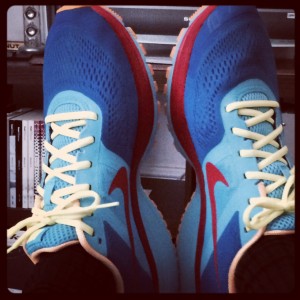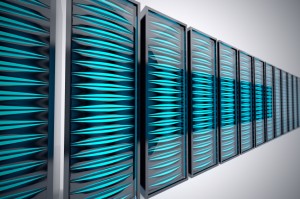Eighteen Debacles

Debacles happen.
We have two old sayings that directly contradict each other. On the one hand, we say, “Look before you leap.” On the other hand, “He who hesitates is lost.” So which is it?
I wasn’t thinking about this conundrum when I assigned the debacles paper in my critical thinking class. Even so, I got a pretty good answer.
The critical thinking class has two fundamental streams. First, we study how we think and make decisions as individuals, including all the ways we trick ourselves. Second, we study how we think and make decisions as organizations, including all the ways we trick each other.
For organizational decision making, students write a paper analyzing a debacle. For our purposes, a debacle is defined by Paul Nutt in his book Why Decisions Fail: “… a decision riddled with poor practices producing big losses that becomes public.” I ask students to choose a debacle, use Nutt’s framework to analyze the mistakes made, and propose how the debacle might have been prevented.
Students can choose “public” debacles as reported in the press or debacles that they have personally observed in their work. In general, students split about half and half. Popular public debacles include Boston’s Big Dig, the University of California’s logo fiasco, Lululemon’s see-through pants, the Netflix rebranding effort, JC Penney’s makeover, and the Gap logo meltdown. (What is it with logos?)
This quarter, students analyzed 18 different debacles. As I read the papers, I kept track of the different problems the students identified and how frequently they occurred. I was looking specifically for the “blunders, traps, and failure-prone practices” that Nutt identifies in his book.
Five of Nutt’s issues were reported in 50% or more of the papers. Here’s how they cropped up along with Nutt’s definition of each.
Premature commitment – identified in 13 papers or 72.2% of the sample. Nutt writes that “Decision makers often jump on the first idea that comes along and then spend years trying to make it work. …When answers are not readily available grabbing onto the first thing that seems to offer relief is a natural impulse.” (I’ve also written about this here).
Ambiguous direction – 11 papers or 61.1%. Nutt writes, “Direction indicates a decision’s expected result. In the debacles [that Nutt studied], directions were either misleading, assumed but never agreed to, or unknown.”
Limited search, no innovation – ten papers or 55.5%. According to Nutt, “The first seemingly workable idea … [gets] adopted. Having an ‘answer’ eliminates ambiguity about what to do but stops others from looking for ideas that could be better.”
Failure to address key stakeholders claims – ten papers or 55.5%. Stakeholders make claims based on opportunities or problems. The claims may be legitimate or they may be politically motivated. They may be accurate or inaccurate. Decision makers need to understand the claims as thoroughly as possible. Failure to do so can alienate the stakeholders and produce greater contention in the process.
Issuing edicts – nine papers or 50%. Nutt: “Using an edict to implement … is high risk and prone to failure. People who have no interest in the decision resist it because they do not like being forced and they worry about the precedent that yielding to force sets.”
As you make your management decisions, keep these Big Five in mind. They occur regularly, they’re inter-related, and they seem to cut deeply. The biggest issue is premature commitment. If you jump on an idea before its time, you’re more likely to fail than succeed. So, perhaps we’ve shown that look before you leap is better wisdom than he who hesitates is lost.
Immoral Afternoons

Good advice.
I used to work for a CEO who had one hard and fast rule when it came to making decisions: he wouldn’t make any important decisions after 2:00 in the afternoon. I used to think it was an odd and unnecessary rule … but then I started counting calories.
My little food diary app keeps track of what I eat and lets me know if I’m getting too much of this or not enough of that. It’s interesting to keep track of what I consume. But what really surprised me was not what I eat so much as when I eat. I eat a well-balanced, healthy diet throughout the day. Then, around 7:00 at night, all hell breaks loose. On a typical day, I eat roughly 50% of my calories between 7:00 and 10:00 at night. If I went to bed at 7:00 pm, I’d be much healthier.
My experience reminded me of Daniel Kahneman’s story about the Israeli parole board. The default decision in any such hearing is to deny parole. To permit parole, the board has to find information that would point toward a positive outcome. In other words, it’s easy to deny parole. It takes more work – sometimes quite a bit more work – to grant parole.
Kahneman reports on a study that tracked parole decisions by time of day. Prisoners whose cases were considered just after lunch were more likely to win parole than those whose cases were considered before lunch. It all has to do with energy. Our brains consume huge amounts of energy. Making difficult decisions requires even more energy. Just before lunch, members of the parole board don’t have much energy. Just after lunch they do. So before lunch, they’re more likely to make the default decision. After lunch, they’re more capable of making the more laborious decision.
Energy doesn’t just affect decision making. It also affects will power (which, of course, is a form of decision making). When our bodies have sufficient stores of energy, we also have more will power. Why do I eat so many calories after 7:00 pm? Perhaps because my energy stores are at a low and, therefore, my will power is also at a low. It might be smarter to spread my calories more evenly throughout the day so my energy – and will power – don’t ebb.
Energy also affects ethics. A research study published in last month’s edition of Psychological Science is titled, “The Morning Morality Effect”. The researchers, Maryam Kouchaki and Isaac Smith, ran four experiments and found that people “… engaged in less unethical behavior … on tasks performed in the morning than in the same tasks performed in the afternoon.” In fact, “people were 20% to 50% more likely to lie, cheat, or otherwise be dishonest in the afternoon than in the morning.”
What’s the common denominator here? Energy depletion. As the day wears on and our energy levels drop, we’re less able to make complicated decisions or resist temptation. The parole board example suggests that we can combat this to some degree simply by eating. I wonder if taking a nap might also help – though I haven’t seen any research evidence of this.
Bottom line: my old boss was right. Make the tough decisions in the morning. Take it easy in the afternoon.
Hawthorne, Heisenberg, and Me

I’m watching you.
Suellen bought me one of those activity-tracking wristbands for my birthday. It keeps track of what I do — including how much time I spend sitting around, how often I’m up and about, how many steps I take, how long I sleep, (including light sleep versus deep sleep), and so on. It will even beep if I sit still too long. It’s telling me to get up, move around, and keep my blood from pooling.
It also calculates how many calories I’ve burned and consumed each day. The system has a good database of foods that I can pick from (or add to). I can, for instance, pick chicken sandwich from the database and learn that I’ve consumed 252 calories, 26 grams of carbs, 20 grams of protein, 466 milligrams of sodium, and 47 milligrams of cholesterol.
I always thought that I kept close tabs on my diet. But the activity tracker delivers much closer scrutiny. I’ve learned a lot about sodium and cholesterol, for instance. I’ve also learned that a glass of red wine has 130 calories while a glass of bourbon has only 50. That’s useful knowledge.
I’ve also re-learned an old lesson: if you observe something, it changes. Simply observing what I eat has changed what I eat. I can ask myself, “I’ve eaten how many calories today? Do I really need that third cheeseburger?”
I’m certainly not the first one to observe this effect. In social science, it’s known as the Hawthorne Effect and derives from experiments in the 1920s at the Hawthorne Works, a Western Electric factory near Chicago. It was the early days of industrial engineering and researchers wanted to know if lighting levels would affect productivity. The researchers measured productivity at an initial level of illumination. Then they improved the illumination and noted that productivity increased. They improved illumination again and productivity improved again. Each time the researchers improved illumination productivity improved.
So, we can conclude that better lighting yields better productivity, correct? Well, not so fast. At the end of the trials, the researchers returned the illumination to its initial level and … productivity improved yet again. The researchers weren’t measuring the effects of illumination at all. They were measuring the effects of observation. When observed, the workers changed their behavior. Perhaps they enjoyed the attention. Perhaps they were angling for a raise. But the mere fact that they were observed, changed their behavior.
In physics, the same (general) phenomenon is known as the Heisenberg Uncertainty Principle. In 1927, Werner Heisenberg stated the basic principle: you can know a subatomic particle’s position or you can know its momentum but you can’t know both. The more certain you are of one, the more uncertain you are of the other. Why can’t you know both? Because of the “… jolt-like disturbance triggered by the act of observation.” If you observe a subatomic particle, it changes its behavior. (Since Heisenberg’s time, the effect has been found in many physical systems and it’s generally known as the observer effect).
We can see similar effects in everyday life. If I don’t know that you’re taking my picture, I’ll behave one way. If I do know, I’ll behave another way (and show you my best side). If I don’t know that a policeman is around, I’ll behave one way. If I do know, I’ll behave another way (most likely).
It’s also a good management principle to keep in mind. A process that’s observed will change its behavior. The more closely you observe, the greater the change. If you want to change something, whether it’s your diet or factory productivity, just pay attention.
Gaudy Is The New Black – Mass Customization

Gaudy is the new black.
I recently designed a new pair of running shoes. I went to the NikeID website and configured approximately a dozen different components to create shoes in my custom colors. Nike assembled the shoes and delivered them to my doorstep in about a week. The price was roughly five percent higher than a standard shoe in standard colors at the mall.
Why did I design my own shoes? Well, partially because I could. Nike’s website has easy-to-use tools that let me mix and match colors until I got exactly what I wanted. I chose to go gaudy because that seems to be the trend today. The downside – Suellen is somewhat embarrassed to be seen with me. The upside – they’re great conversation starters, especially with women. Men, not so much.
Note that I only configured my new shoes. I didn’t custom build them. The shoe is an Air Pegasus, a standard, off-the-shelf model. I couldn’t design my own tread pattern or insole, for instance. Nor could I fool with the sizes. My feet are not the same size and I’d love to order shoes that fit each foot. Not yet. All I could do was take a standard template in a standard size and customize the colors.
I chose Nikes because I know exactly what size to order. I’m sure that all the athletic shoe companies have similar configurators but I’m leery about ordering the wrong size. I’ll probably stick with Nikes until better sizing systems come along.
According to McKinsey, in their latest report on mass customization, I probably won’t have to wait long. In fact, I should be able to do more customizing and less configuring in a number of product categories. Here are some examples drawn from the McKinsey report.
Sizing and virtual try-ons – several companies, including Styku and Constrvct, will scan your body (or parts of it) to create very precise 3D models. The system then projects the model on your computer and you “try on” clothes, shoes, etc. (Suellen used a simple version of this when ordering her Warby Parker glasses).
Create your own products – Starbucks allows you to create your own coffee drinks at frappuccino.com. At Adagio Teas, you can create your own tea that the company ships to you. You can keep it a secret (Travis Tea?) or offer it to the public. If other people order it, you get points toward future purchases. At Shoes of Prey, you can configure virtually any kind of shoe, not just running shoes. In all these examples, you get what you want but the vendor also gets more than just a sale. They also get valuable insights into market trends and what’s popular where.
Recommendation engines – I’m used to Amazon suggesting that if I like Book X, I’ll also enjoy Book Y. That’s nice. But, how about a recommendation engine that will help me build a new product? Why couldn’t the NikeID system tell me, for instance, that red and orange don’t go well together? McKinsey highlights a company called Chocri, that helps you build custom chocolate bars. If you create a bar with strawberry bits, it will recommend complementary flavors like cinnamon, almonds, or edible gold flakes. Who knew?
So, we’ll have much more choice in the near future. With flexible software to manage inventories and programmable robots to assemble the goods, custom-made products probably won’t cost much more than today’s off-the-shelf goods. That should create clear benefits for both suppliers and customers. It won’t be long. In fact, we may see many of the solutions even before I wear out my gaudy new shoes.
Products As A Service – The Circular Economy

Why buy when you can rent?
I’ve bought several products recently without really buying them. Rather than buying the product, I bought the benefits. The manufacturer still owns the product. In the future, the manufacturer may take the product back, replace it with a newer, better product, and recycle the original product.
I get two sets of benefits. First, I get the benefit of whatever the product offers. Second, I get the benefit of staying current with the latest technology. (This is sometimes known as future-proofing). The manufacturer also gets two benefits. They get a steady income stream as I rent the first product. And, when they upgrade me, the manufacturer can refurbish my original product and resell it.
I bought my new smart phone this way last December. I pay a monthly fee to use the hardware. The fee also gives me the right to upgrade to a new phone in 12 months, with no additional charge. I simply give my current phone back to the manufacturer and walk out with the new phone. The manufacturer takes my old phone back, refurbishes it, and “sells” it to someone else.
In the software world, this is known as an “as-a-service” offering. Workday, for instance, offers software-as-a-service for human resources applications. Companies don’t buy the software. Rather they buy access to the software as it runs on the cloud. Behind the scenes, Workday can upgrade to new releases or new technology transparently.
Amazon similarly offers platform-as-a-service through its Amazon Web Services arm. Amazon has built a huge array of computers; anyone can access it by the hour, or day, or week, or year. You just pay for what you use. I now have the power of a supercomputer at my fingertips (for a brief period).
Outside the software world, this concept is more generally known as the circular economy. The idea is that a manufacturer sells a product and expects that it will circle back at some time in the future. The manufacturer can capitalize on the remaining economic value within the product by refurbishing, reselling, or recycling it.
Phillips Electronics seems to be one of the leading practitioners of the circular art. In an interview with McKinsey, the Phillips CEO, Frans van Houten discusses some of their projects. For instance, Phillips has a contract with Buenos Aires to replace 125,00 streetlights with advanced LED devices. Buenos Aires is buying the light, not the devices. Phillips can upgrade the devices in the future to capitalize on energy-saving enhancements. Conceivably, Phillips could sell the current LED devices to other cities.
As van Houten point out, the circular economy also changes the way product designers think. They’re no longer designing a product that they’ll never see again. In all likelihood, the product will circle back to them. So, they design not only for function, but also for longevity and reuse. That can mean better margins for the manufacturer as well as lower costs for the customer.
Best of all, perhaps, the circular economy also means that fewer products wind up in landfills. Rather than designing for obsolescence, circular companies are designing products that will live multiple lives. That can only be good for us and the world we live in.